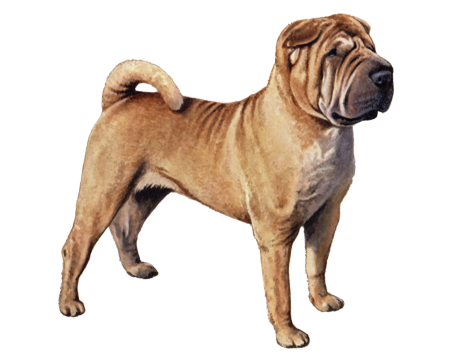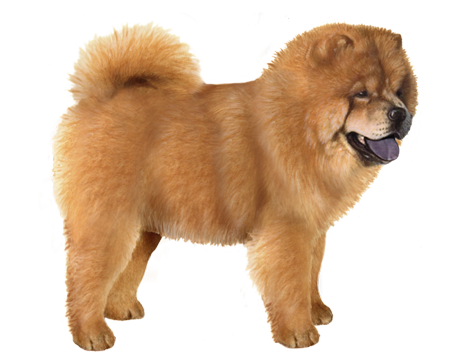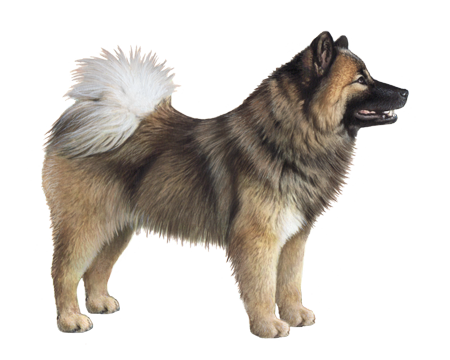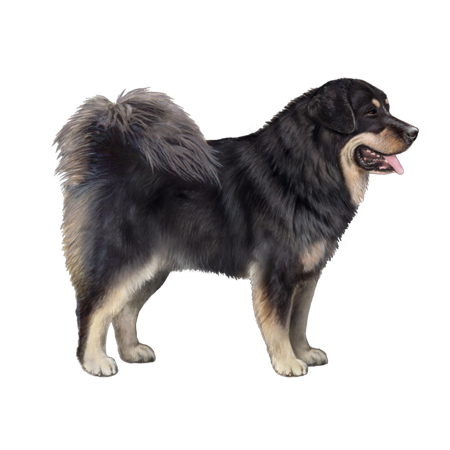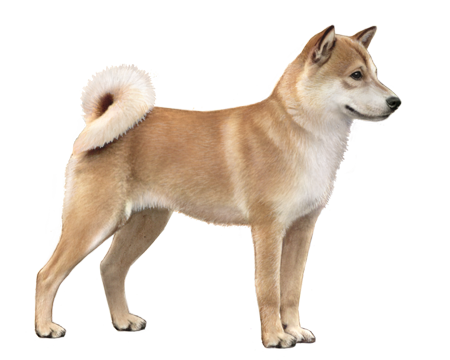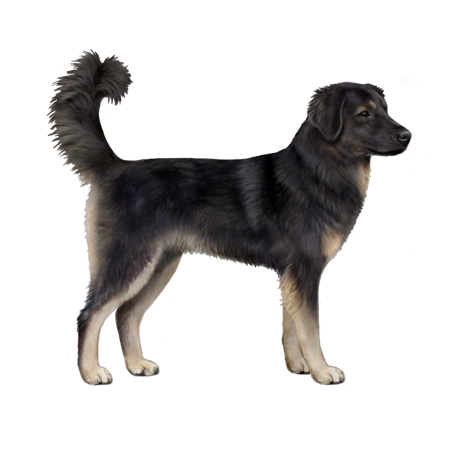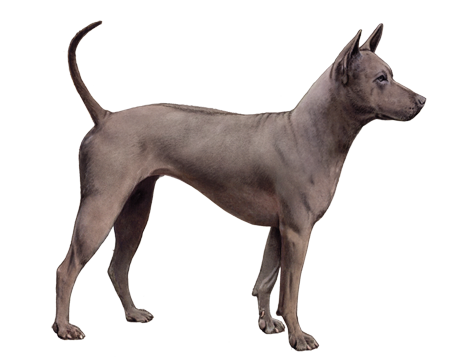
Sapsaree
The Sapsaree is an ancient dog breed from South Korea. They are gentle, obedient dogs with loyal personalities.
Interested in discovering if your dog is a Sapsaree?
Check out Wisdom Panel's DNA tests.

Sapsaree Traits
General Appearance
The Sapsaree is a medium-sized dog with a kind expression. The thick hair on their heads earned them the nickname "lion dog."
Coat and Colouring
The breed is known for its shaggy double coat. The outer coat is long and thick and can be straight, semi-curly, or curly. The undercoat is short, soft, and dense. Most dogs have furnished faces, but occasionally, smooth-muzzled dogs do occur.
Sapsarees come in yellow (hwang) and blue (chung) varieties. Yellow dogs can be any shade of red from cream to mahogany. “Blue” Sapsarees are traditionally called blue due to the color of their fur in moonlight, but are actually black, and black and tan colors are also called blue. Though rare, some dogs are chocolate, white, or spotted.
Distinctive Physical Traits
The Sapsaree has a rounded head, long muzzle, and long neck. They have a well-developed chest, strong legs, and a long tail that can be straight, curled, or in a ring. They also have large, brown eyes and floppy drop ears.
Sapsaree Temperament
Overall, Sapsarees are charming, loyal dogs that are happiest when close to their people. They are devoted to their families but can be wary of strangers. The breed is typically quiet and only barks when necessary, but when they have something to say, their bark is loud and strong.
Thanks to their gentle, obedient nature, Sapsarees make excellent therapy dogs and have been used to soothe hospital patients since 1999.


Sapsaree History
The Sapsaree, alternatively spelled Sapsali or Sapsari, originates from Gyeongsan. Along with the Jindo and Donggyeongi, it is one of three native breeds designated as cultural treasures by the Republic of Korea.
Depictions of dogs similar to the Sapsaree appear in tomb murals dating back to 37 B.C.- 668 A.D. Their name means to "drive away evil spirits and bring blessings." Because Shih Tzu and Pekingese were sent as gifts to the royal court during the Three Kingdoms period, and were also given the nickname of sapsaree, some suggest the Sapsaree was originally a category of dogs that served a spiritual function. If that is the case, the modern Sapsaree represents that ancient category of dogs as a regional variety that survived. Royal families and aristocrats adored the Sapsaree, and generals used them as military dogs in wars.
However, during the Japanese occupation of Korea from 1910 to 1945, the Japanese military killed millions of Sapsarees and used their fur to make coats for their soldiers. In 1969, 30 dogs were found in rural corners of Kyungpook province and a breeding program started. However, due to expense, in the following decades, the breed's population continued to decrease. By the mid-1980s, only eight dogs remained. Geneticist Ha Ji-Hong led the effort to restore the breed, using a combination of traditional breeding and DNA technology, and the breed was designated a natural treasure in 1992 to protect and fund their restoration.
Today, the number of Sapsarees is in the thousands. Some dogs live in homes throughout South Korea, while the Sapsaree Foundation raises others for continued breeding. Because the Sapsaree gene pool is quite small, selection for specific physical traits will not be carried out until there are at least 10,000 breeding dogs to prevent unnecessary inbreeding.
Sapsaree Care
Nutrition
The Sapsaree thrives on high-quality dog food formulated for their age, size, and activity level.
All dogs are at risk for obesity if they overeat. To help this breed maintain a healthy weight, measure their meals to ensure proper portions and keep treats to 10% or less of their daily calories.
Grooming
The Sapsaree's long coat requires daily brushing to prevent tangles and remove loose fur. Their ears should be checked regularly and cleaned when necessary to remove wax build-up and debris. Regular nail trims should also be part of their grooming routine. Nails that grow too long can crack, split, or cause difficulty walking. Finally, establish a dental care routine that includes at-home teeth brushing and professional dental cleanings to support their overall health.
Exercise
These dogs are athletic and need daily exercise to stay fit and burn excess energy. Long walks and backyard play sessions are great ways to keep them active. Additionally, Sapsarees love swimming or playing in rivers and lakes.
Training
These intelligent dogs are eager to please their people, so they are typically easy to train. Positive reinforcement using treats or favorite toys as rewards for desired behaviors works well for this breed.
In addition to obedience training, all dogs will benefit from early socialization. Getting them comfortable with different people and environments when they're young will help them grow into well-adjusted adult dogs.
Breed Group
Asian and Oceanian
The Asian and Oceanian group is comprised of breeds whose origins lie in Asia, which have spread as far as Australia, the islands of the Pacific, and the Arctic. This group is possibly the most ancient of all breed groups and were bred for a variety of purposes, including guarding, hunting, and as draft dogs.





